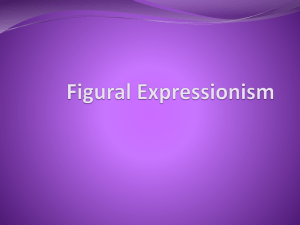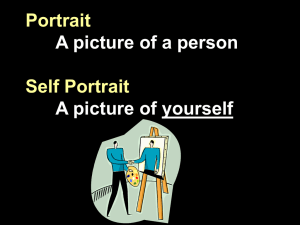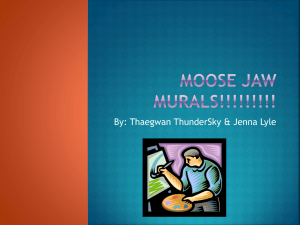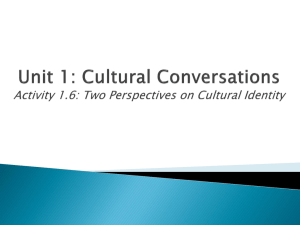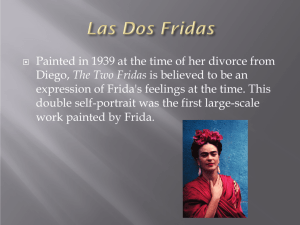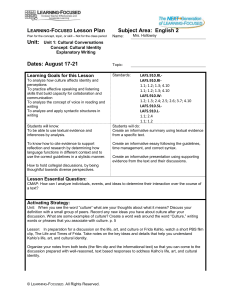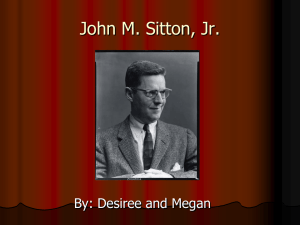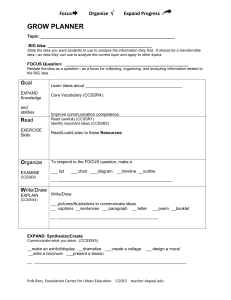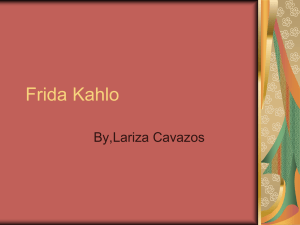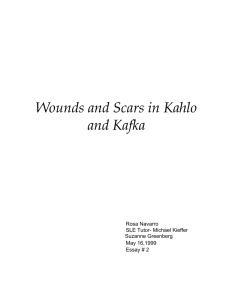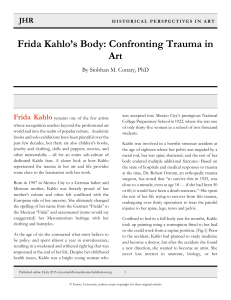The Freedom Within
advertisement
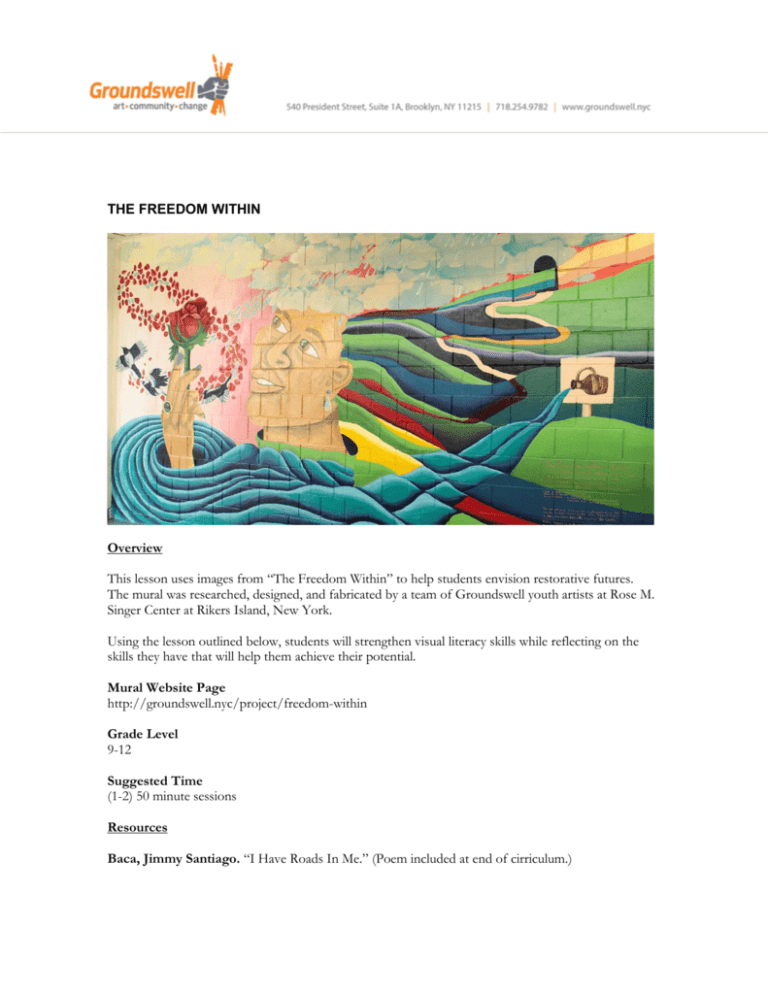
THE FREEDOM WITHIN Overview This lesson uses images from “The Freedom Within” to help students envision restorative futures. The mural was researched, designed, and fabricated by a team of Groundswell youth artists at Rose M. Singer Center at Rikers Island, New York. Using the lesson outlined below, students will strengthen visual literacy skills while reflecting on the skills they have that will help them achieve their potential. Mural Website Page http://groundswell.nyc/project/freedom-within Grade Level 9-12 Suggested Time (1-2) 50 minute sessions Resources Baca, Jimmy Santiago. “I Have Roads In Me.” (Poem included at end of cirriculum.) Herrera, Hayden. “Frida Kahlo: The Paintings.” Harper Perennial, 1991. Frida Kahlo Foundation. “The Complete Works” (online gallery). http://www.frida-kahlofoundation.org/ Maria-Reina Bravo, Doris. “Kahlo, The Two Fridas (Las dos Fridas.” https://www.khanacademy.org/humanities/art-1010/art-between-wars/latin-americanmodernism1/a/kahlo-the-two-fridas-las-dos-fridas PBS. “Honestly Frida.” http://www.pbs.org/weta/fridakahlo/life/ PBS. “The Life and Times of Frida Kahlo” (video). 26 October 2012. https://www.youtube.com/watch?v=jYWKoMFjnbs The Lesson Ice Breaker Declare the space as one of intentional reflection by forming a circle. On an index card, write a personal declaration of self-worth. In the circle, allow each person time to read their declaration. Introductory Activity Look at the image of the completed mural with the students. Using the below questions, lead a short guided discussion of the image content. Guiding Questions What’s going on in this image? What do you see that makes you say that? What more can we find? What questions do you have? Hands-On Activity As a group, invite students to read “I Have Roads in Me” by Jimmy Santiago Baca. This poem was read by the Groundswell youth artists while designing the mural. Discuss the students’ reaction to the poem. Both “I Have Roads in Me” and “The Freedom Within” illustrate that there is tremendous inspirational potential within every person. Both the poem and the mural use symbolism to illustrate this potential. The students will use this theme to consider their own potential. Each person will be given two blank pieces of paper. On one paper, invite each student to finish the sentence “My dream is…” After that, ask the students to finish the sentence “I can achieve my dream because I…” with three different answers. Examples of answers are “…because I believe I can” and “…because I practice my art skills.” After they have their completed list, the students will turn to their second piece of paper. Ask the students to draw a visual symbol for each way they will achieve their dream on the one sheet. Encourage the students to connect the three symbols into one connected picture. The three symbols together represent the skills they have within that will help them achieve their dreams. Next, put up all symbols on wall. Have students look at them and choose one they are interested in. Have students share what they see in the symbol, and then have the student who created it share what it symbolizes to them. Guiding Questions 1. What does this symbol represent? What kind of information is it giving to you? 2. What are ways you have already used your skills to achieve success in your life? 3. What could you add or take away to make this a stronger symbol? 4. What were some successes in creating this symbol? What were some of your challenges? After the guided discussion, the class will have a better understanding of how they too have a lot of potential within themselves, and will have together begun the process of building a shared visual vocabulary to communicate this. Look at the mural again. This time, ask students to notice the visual symbols used by the youth. Culminating Activity (Note: This research and writing project can be assigned as homework or a Day 2 classroom assignment). The central image in the mural is a woman with flowing hair that transforms into the earth and water. One of the influences for the style of the mural is the artist Frida Kahlo. Kahlo was a Mexican selfportrait artist who painted herself with symbolism. She often used her art to explore her disability, to empower herself as a woman, and to advocate against systems that promoted inequality. Scroll through the online gallery of her work and discuss her art. Based on the learning inspired by the mural, and using the sources provided above, invite students to write a reflection which explores how recognizing one’s inner worth is important to achieving one’s dreams. Inspired by this reflection, complete a Friday Kahlo-inspired self-portrait. Guiding Questions 1. When have you used your skills to overcome an obstacle? 2. What inspires you? 3. What do you want to be remembered for? (Note: You may choose to direct students to use the web links above to locate primary sources. You may also want to assign one source to a pair of students so that student teams or pairs can report back and share their findings with the class. It may be helpful to extend this activity to multiple days to allow students to complete their research and summaries. If possible, make multiple copies of student summaries to share). National Arts Content Standards 3) Choose and evaluate a range of subject matter, symbols, and ideas. 4) Understand the visual arts in relation to history and culture. 5) Reflect upon and assess the characteristics and merits of their work and the work of others. New York State Learning Standards in the Arts 1) Create and participate in the arts. 3) Respond to and analyze works of art. 4) Understand the cultural contributions of the arts.
